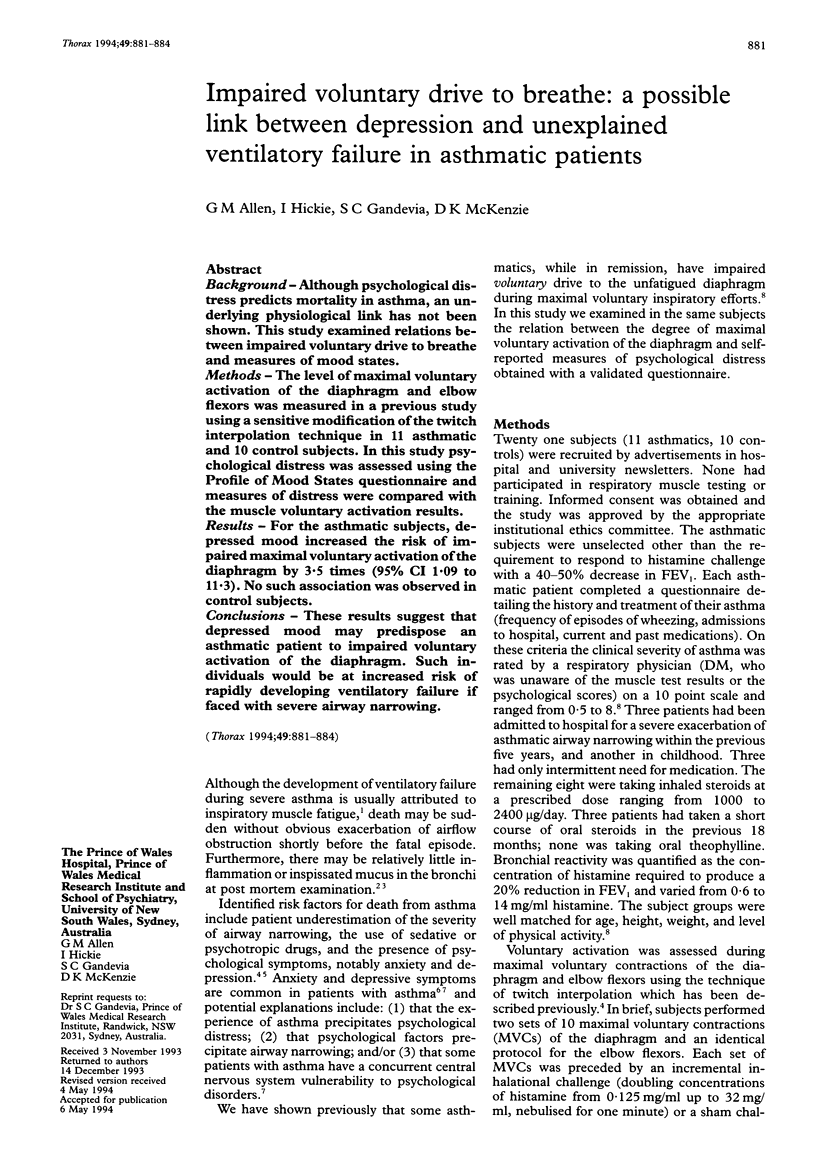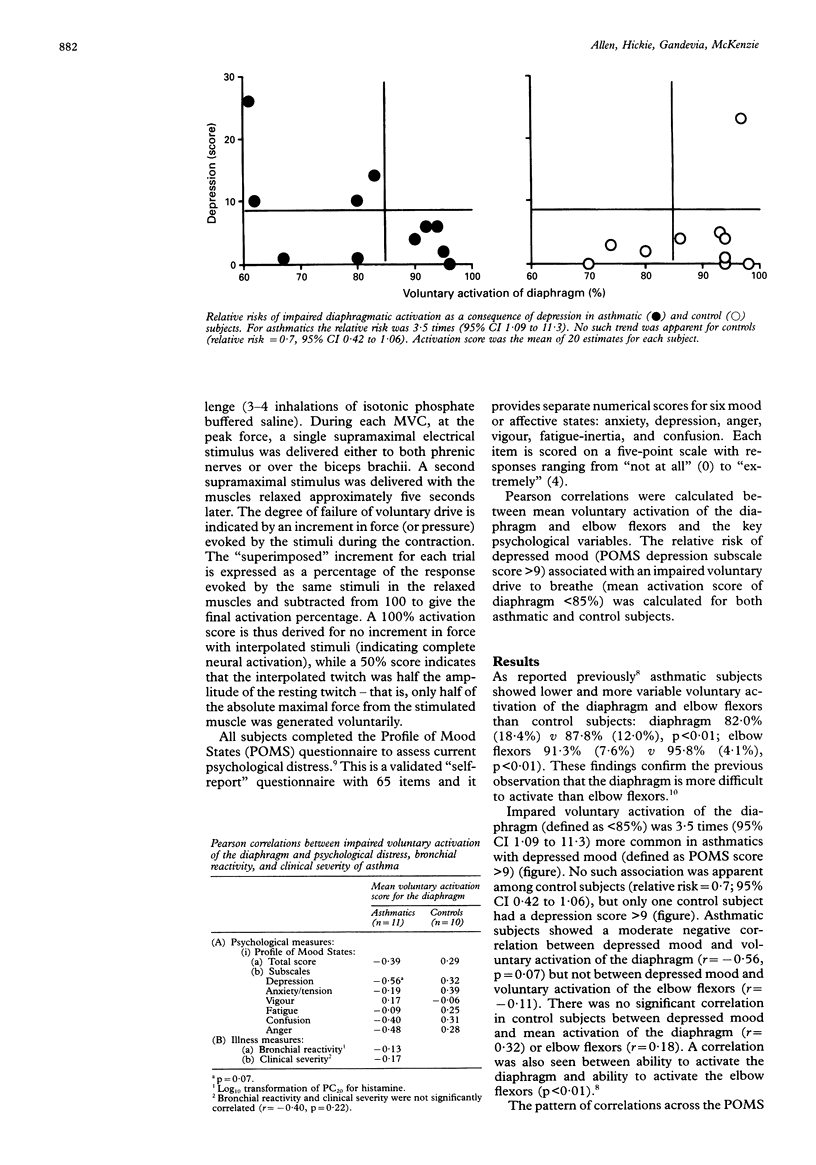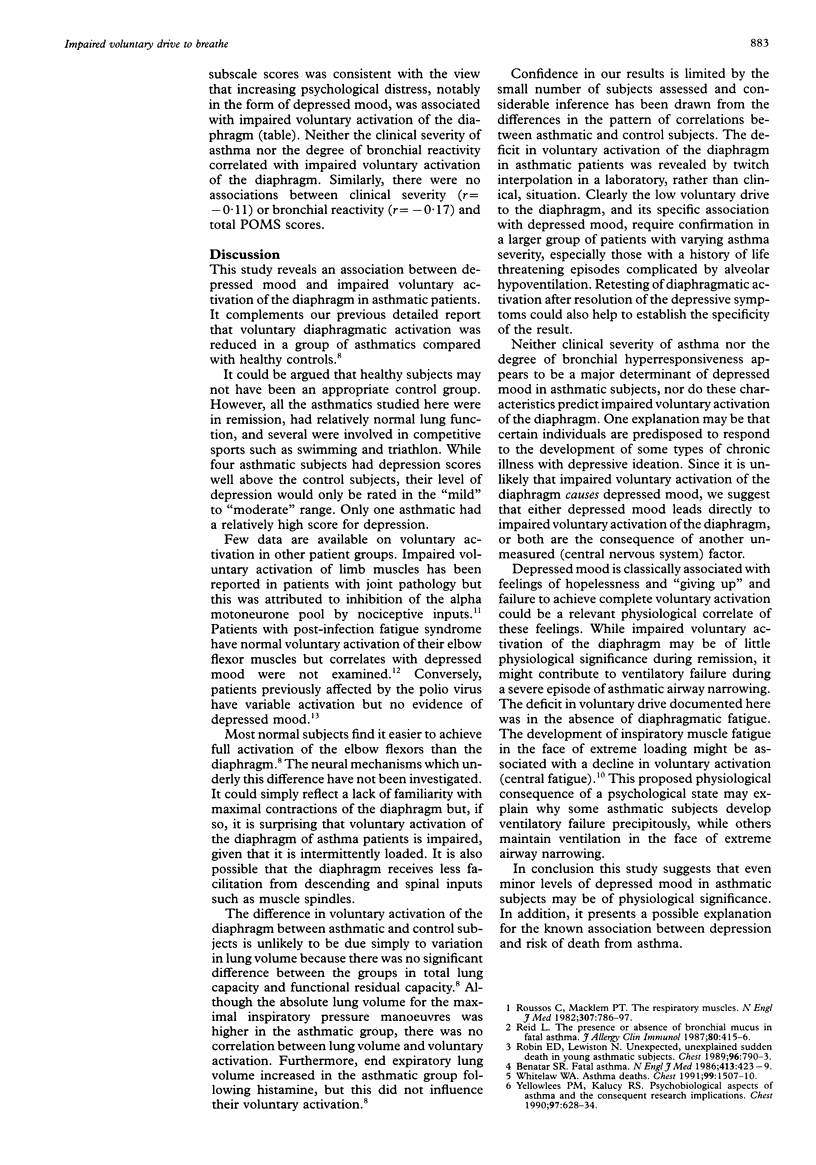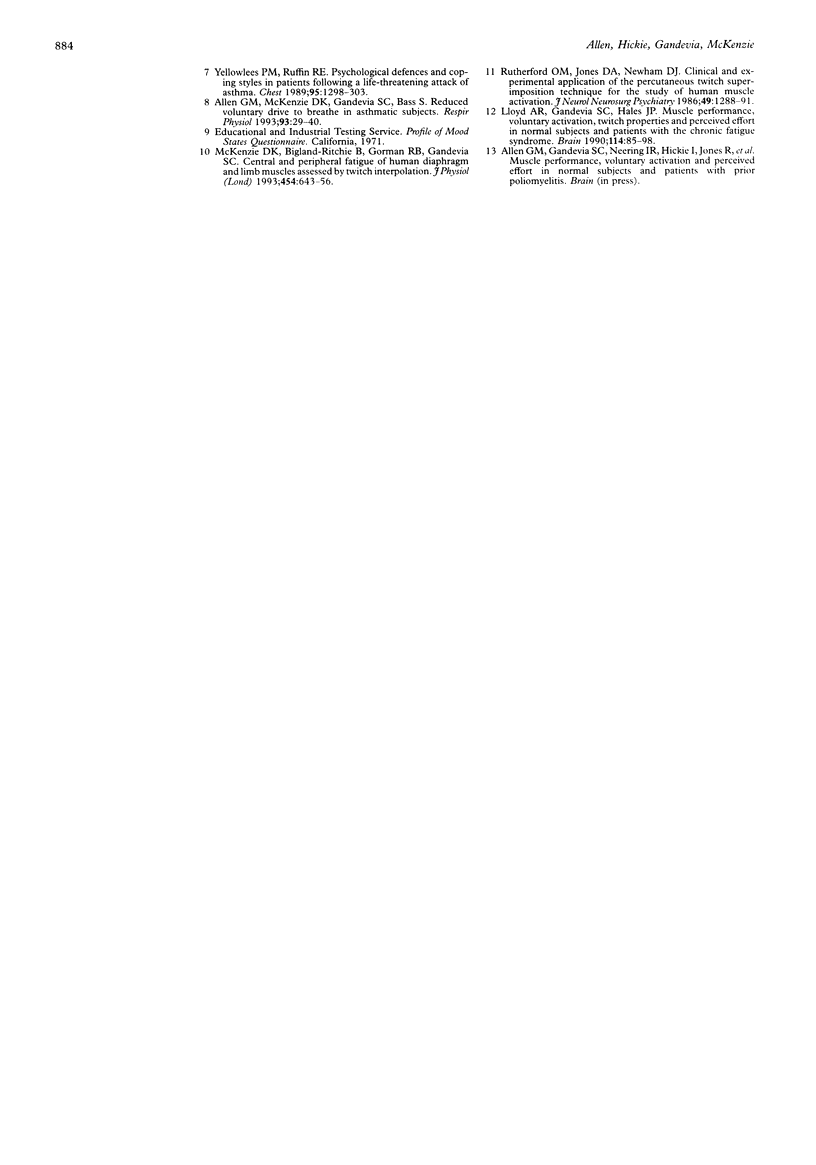Abstract
BACKGROUND--Although psychological distress predicts mortality in asthma, an underlying physiological link has not been shown. This study examined relations between impaired voluntary drive to breathe and measures of mood states. METHODS--The level of maximal voluntary activation of the diaphragm and elbow flexors was measured in a previous study using a sensitive modification of the twitch interpolation technique in 11 asthmatic and 10 control subjects. In this study psychological distress was assessed using the Profile of Mood States questionnaire and measures of distress were compared with the muscle voluntary activation results. RESULTS--For the asthmatic subjects, depressed mood increased the risk of impaired maximal voluntary activation of the diaphragm by 3.5 times (95% CI 1.09 to 11.3). No such association was observed in control subjects. CONCLUSIONS--These results suggest that depressed mood may predispose an asthmatic patient to impaired voluntary activation of the diaphragm. Such individuals would be at increased risk of rapidly developing ventilatory failure if faced with severe airway narrowing.
Full text
PDF



Selected References
These references are in PubMed. This may not be the complete list of references from this article.
- Allen G. M., McKenzie D. K., Gandevia S. C., Bass S. Reduced voluntary drive to breathe in asthmatic subjects. Respir Physiol. 1993 Jul;93(1):29–40. doi: 10.1016/0034-5687(93)90065-i. [DOI] [PubMed] [Google Scholar]
- Benatar S. R. Fatal asthma. N Engl J Med. 1986 Feb 13;314(7):423–429. doi: 10.1056/NEJM198602133140706. [DOI] [PubMed] [Google Scholar]
- Lloyd A. R., Gandevia S. C., Hales J. P. Muscle performance, voluntary activation, twitch properties and perceived effort in normal subjects and patients with the chronic fatigue syndrome. Brain. 1991 Feb;114(Pt 1A):85–98. [PubMed] [Google Scholar]
- McKenzie D. K., Bigland-Ritchie B., Gorman R. B., Gandevia S. C. Central and peripheral fatigue of human diaphragm and limb muscles assessed by twitch interpolation. J Physiol. 1992 Aug;454:643–656. doi: 10.1113/jphysiol.1992.sp019284. [DOI] [PMC free article] [PubMed] [Google Scholar]
- Reid L. M. The presence or absence of bronchial mucus in fatal asthma. J Allergy Clin Immunol. 1987 Sep;80(3 Pt 2):415–416. doi: 10.1016/0091-6749(87)90064-9. [DOI] [PubMed] [Google Scholar]
- Robin E. D., Lewiston N. Unexpected, unexplained sudden death in young asthmatic subjects. Chest. 1989 Oct;96(4):790–793. doi: 10.1378/chest.96.4.790. [DOI] [PubMed] [Google Scholar]
- Roussos C., Macklem P. T. The respiratory muscles. N Engl J Med. 1982 Sep 23;307(13):786–797. doi: 10.1056/NEJM198209233071304. [DOI] [PubMed] [Google Scholar]
- Rutherford O. M., Jones D. A., Newham D. J. Clinical and experimental application of the percutaneous twitch superimposition technique for the study of human muscle activation. J Neurol Neurosurg Psychiatry. 1986 Nov;49(11):1288–1291. doi: 10.1136/jnnp.49.11.1288. [DOI] [PMC free article] [PubMed] [Google Scholar]
- Whitelaw W. A. Asthma deaths. Chest. 1991 Jun;99(6):1507–1510. doi: 10.1378/chest.99.6.1507. [DOI] [PubMed] [Google Scholar]
- Yellowlees P. M., Kalucy R. S. Psychobiological aspects of asthma and the consequent research implications. Chest. 1990 Mar;97(3):628–634. doi: 10.1378/chest.97.3.628. [DOI] [PubMed] [Google Scholar]
- Yellowlees P. M., Ruffin R. E. Psychological defenses and coping styles in patients following a life-threatening attack of asthma. Chest. 1989 Jun;95(6):1298–1303. doi: 10.1378/chest.95.6.1298. [DOI] [PubMed] [Google Scholar]


